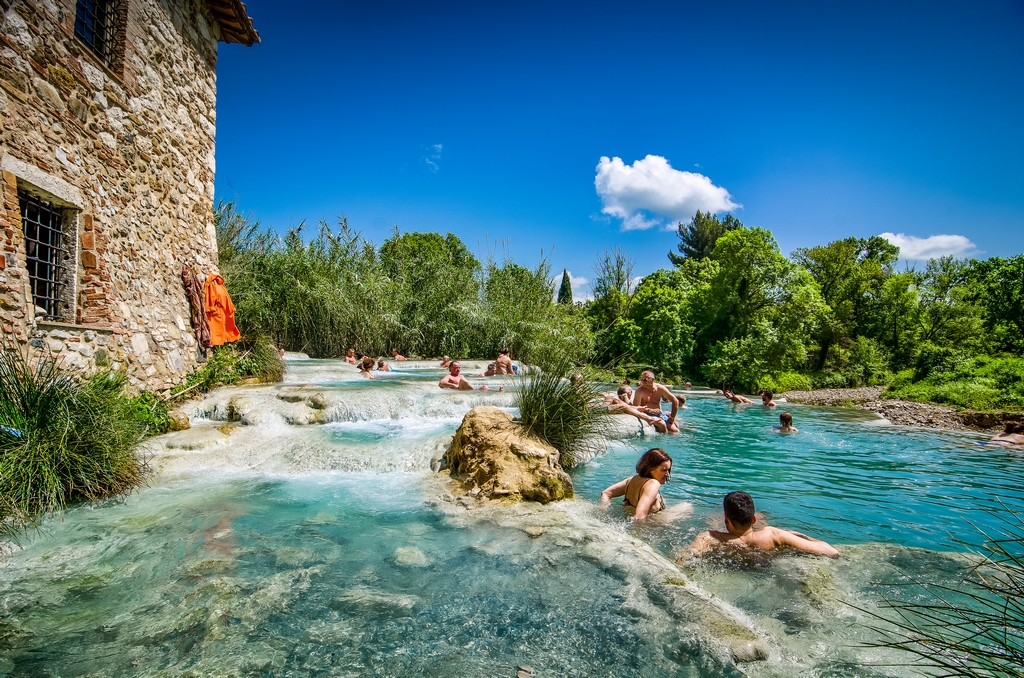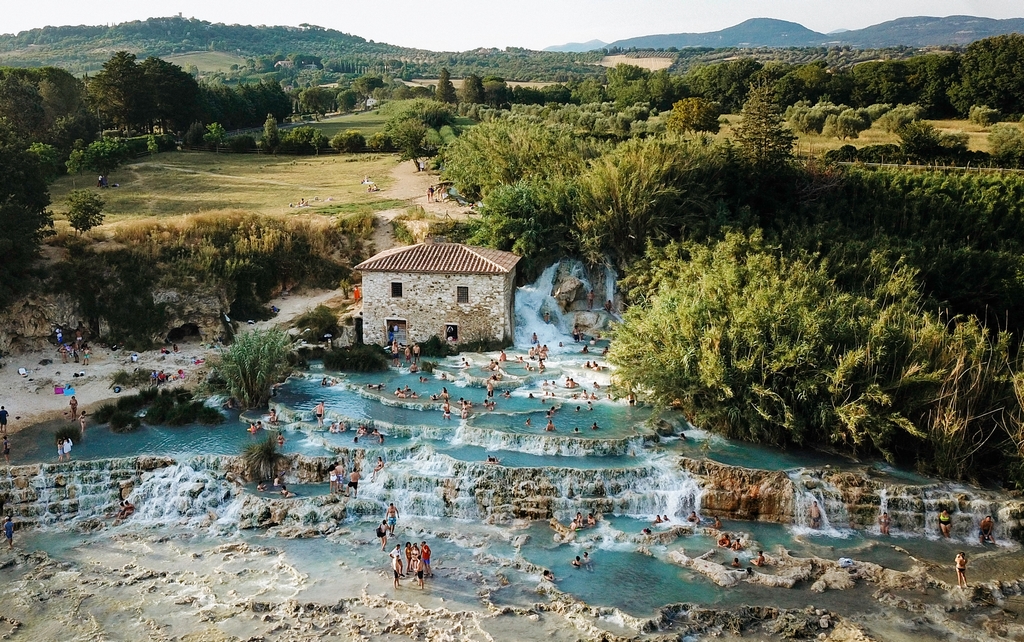Ages of Indulgence


Historians can only estimate how long humans have been indulging the benefits of hot water in natural springs warmed by the earth. One place in Italy, believed to be made by the gods, is estimated to have been in continuous year-round use by health and pleasure seekers for more than 20,000 years – and remains one of Tuscany’s most popular attractions.
By Eric Herman
Centuries before Roman baths were created, ancient Italians had been indulging in water heated by the Earth’s geothermal energy.
Saturnia, a small city in Tuscany, Italy, is believed to be the oldest settlement on the Italian peninsula, with ruins and artifacts in the town dating all the way back to the 20th Century B.C. It is is also home to an amazing set of thermal baths and waterfalls that are believed to have been in use by local residents and travelers since ancient times as well.
Legend has it that the town was founded in honor of the god Saturn, hence the name, who was banished to earth for his misdeeds. He took refuge on a massive boulder of travertine located between the Albegna River and Stellata stream where the hilltop settlement has been located since pre-history.
It was there a population of Pelasgians (a pre-Hellenic people of unknown origin) settled and developed a prehistoric society on the location of the falls and thermal baths. Archeological evidence suggests the town has been continuously inhabited since at least 8,000 B.C., and as far back 20,000 B.C. a fact that is difficult pinpoint because it predates written history.
However long it’s been there, the thermal baths and elegant falls at Saturnia were a popular destination for the ancients, especially during the Roman Empire when public bathing was an important part of daily life. The baths fell into disuse during the Dark Ages but were rediscovered and re-established by the Medici family in the early Renaissance. Saturnia has since become an iconic symbol of the luxurious Tuscan lifestyle.
The waters that feed the spa and baths originate from springs two hundred meters below the earth and are heated by the thermal activity of Maremma’s volcano Monte Amiata – the second largest in Italy. They flow at a rate of eight hundred liters per second filling the individual baths and pools of the “Le Cascate del Mulino” (The Mill Falls) and then the “Le Cascate del Gorillo” waterfalls with waters at a constant 37.5 °C.
The early development of Saturnia in the 4th century B.C. was linked to its strategic importance against the expansionist policy of Rome, and the alliance of Italic peoples, the Celts and the Etruscans.
A large Etruscan gateway to the village still stands and serves as an immediate reminder of the area’s ancient roots. The gate features a precise jigsaw pattern and an irregular shape made with large stones which have withstood the test of time for more than two thousand years.
Each year, tens of thousands of Italians and tourists pass through that gate to visit the site where they luxuriate in the soothing and healthful waters. The terraced pools offer sweeping views of the surrounding landscape and are believed by some to be among the early inspirations for vanishing edge designs – a point of pure speculation, but fun to consider nonetheless.
It’s interesting to note that the enjoyment of hot water in beautiful settings is something links modern humans to people who lived literally thousands, perhaps tens of thousands years ago.
Opening image by Marketa182 | Shutterstock; lower image by Marcel Crisah | Shutterstock.











